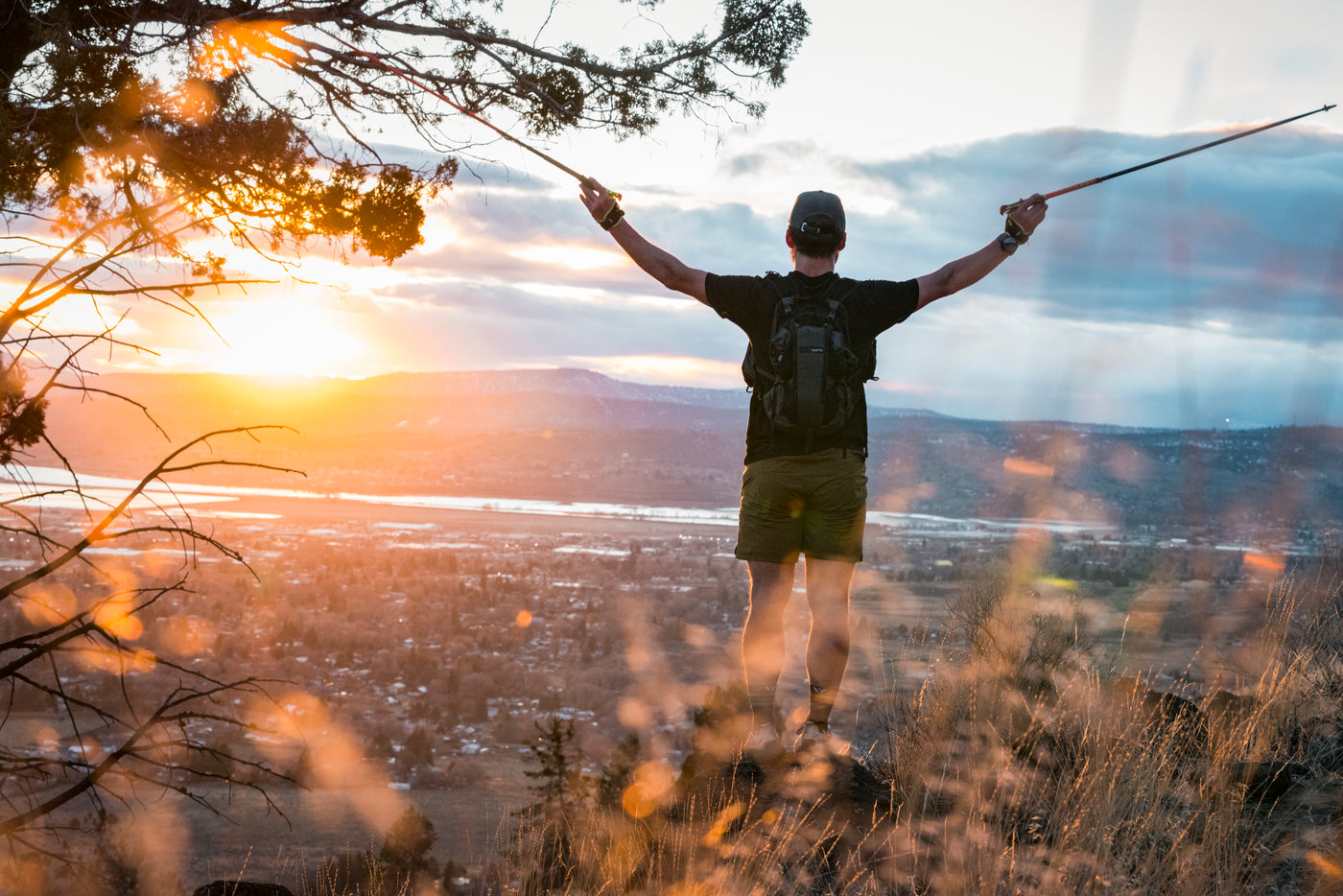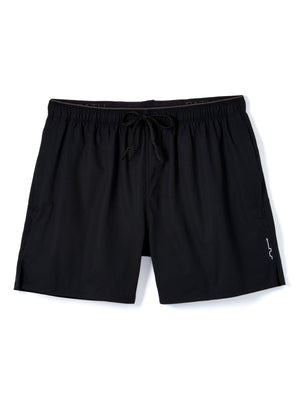
Photo by Paul Robert Wolf Wilson
The world of trail running continues to grow, and along with it, the desire to push the limits of what is possible. One way in which runners do this is by attempting a Fastest Known Time (FKT). An FKT is essentially a speed record for a given route and can be attempted in a variety of ways. In this blog post, we'll dive into what an FKT is, how to plan an attempt, the different styles of FKTs, the rules surrounding each style, and what makes a good route for an FKT.
What is an FKT?
If you’re a runner, you’ve probably heard of them. An FKT is a timed attempt to complete a particular route or trail faster than anyone else has done it before. They may be done alone or with a partner or group and can be supported or unsupported. In recent years, FKTs have become increasingly popular among trail runners to push themselves to their limits, sometimes in lieu of organized races. FKTs are a wonderful way to test your ability while also connecting to the wilderness spaces we all love.
You pay for an organized race so you have access to perks along the course, such as fully stocked aid stations, helpful race volunteers, medical teams, and fully marked courses. Much of the logistics are taken care of, including securing permits. However, with FKTs, there are no aid stations or support crews along the way to provide you with food, water, or medical assistance unless you plan it yourself, which provides a great deal of freedom, but also puts more front-end work on you.
Generally less formal than organized races, with no entry fees, race bibs, official timing, or mass start, you decide on the date and time to start your attempt. Depending on the route, FKTs can sometimes involve more technical terrain than an organized race, or even off-trail travel and potential hazards such as river crossings and rock scrambles.
FKTs are tracked and verified through the submittal GPS data (like what you would get from a GPS watch), live tracking, and photos instead of chip times and timing mats. So, unlike races, documenting your experience and recording your GPS track is paramount.
Overall, FKTs represent a different way of experiencing the sport of running, emphasizing personal challenge and exploration over competition and formal organization. While they may not be for everyone, they offer a unique and exciting way to push one's limits and connect with the natural world in a profound and meaningful way.
How to Plan Your First FKT

Planning an FKT can be daunting, but with careful preparation, it is a gratifying experience. Here are some critical steps to keep in mind when planning your attempt:
Choose Your Route
The first step in planning an FKT attempt is to choose your route. Ideally, you should choose a route that is challenging but still achievable for you. It may help to choose a route that is well-documented with plenty of available information. Making sure you know the route well will help you to plan your strategy and know what to expect when you're on the trail. You can find routes on the Fastest Known Time website.
Plan Ahead
Once you've chosen your route, it's time to research. This might involve talking to other runners who have attempted the route before, studying maps and elevation profiles, and researching weather conditions and any hazards you might encounter. If necessary, you'll need to know if there are places to fill your water and what time of year is best for that particular trail. Some routes on the FKT website have specific rules you must follow for the FKT to be valid. Make sure you follow all wilderness regulations for the area that you will be entering. You may be required to secure a permit, or there may be rules surrounding where you can travel.
Train Smart
Training is vital to any successful FKT attempt, like in organized races. Adjust your training plan to prepare you for the challenges along the route. If possible, scouting out the route ahead of time and going through a practice run will give you a sense of the terrain and challenges you'll face. A practice run is not always possible, and that's okay – especially if you have to travel for the attempt or if it's particularly long – but this may make the research portion even more critical.
Research Existing Records
Before attempting to set a new FKT, it's essential to do your research and determine the current record for your chosen route. You can do this by checking the FKT website and social media groups, like Strava, or by reaching out to other runners who may have attempted the route in the past. Knowing the current record will help you to set a realistic goal and to plan your attempt accordingly.
Set a Realistic Goal
Finally, setting a realistic goal for your FKT attempt is essential. This means taking into account the difficulty of the route, the weather conditions, and your physical abilities. Be prepared to adjust your goal if conditions on the day of your attempt are not favorable, and remember that the most important thing is to have a safe and enjoyable experience on the trail.
Different Styles of FKTs

There are three styles of FKTs: unsupported, self-supported, and supported. Each style has its own set of rules and requirements, so it's important to understand the differences between them before attempting an FKT.
Unsupported
An unsupported FKT is the most challenging style of FKT attempt. In this style, the runner must complete the route independently, without outside assistance. This means carrying their food, water, and gear and not receiving help from other runners or a support crew. This style also dictates that you may not cache gear, food, or water in advance. Everything that the runner needs must be carried in and carried out during the attempt. Unsupported FKT attempts are often seen as the purest form of trail running, as they require the runner to be entirely self-sufficient, relying on their own skills and abilities. Please keep in mind that even having someone come out and take photos of you or check on you during an unsupported effort technically makes it supported.
Self-Supported
A self-supported FKT is similar to an unsupported attempt but has some additional flexibility. In a self-supported FKT, the runner is allowed to access pre-arranged supply drops along the route, which can contain food, water, or other necessary items. However, the runner must still carry all their gear and cannot receive assistance from other runners or a support crew. This style can make longer FKTs more approachable as a solo attempt because you do not have to carry everything from the start and can plan resupplies.
Supported
A supported FKT is a common style of FKT and involves having a dedicated support crew to help the runner along the way. In a supported attempt, the runner can receive assistance from their crew, including food and water, and even have pacers run with them for part of the route. However, the runner must still complete the route entirely under their own power and cannot use any form of mechanical assistance unless noted in the route description.
What Makes a Good FKT Route?

You don't have to stick to the routes on the FKT website. You are welcome and encouraged to create your own! However, there are some guidelines to follow when creating your own route. Here are some of the key things to keep in mind:
Challenge
There are minimum requirements for a route to be considered for the FKT website. A new route must be at least five miles in distance or have at least 500 feet of elevation gain. Routes that fail to meet one of these requirements will not be accepted as a route on the website. The best FKT routes are those that are challenging but still achievable. This might mean a route with a lot of elevation gain, technical terrain, or long distance.
Classic for the Area
FKT routes should be considered classic for the area they are located in. Your favorite loop around the block is better off as a Strava segment and not an FKT. An excellent way to look at it is to ask yourself if another person would be willing to travel from out of the area to run your route. All Fastest Known Time routes must have a clearly defined start and end and be repeatable, whether on clearly marked trails or along distinct ridgelines, canyons, etc.
Submitting an FKT

Once you've successfully completed your FKT attempt, celebrate! Then it's time to submit your FKT. Go to the Fastest Known Time website, create an account, and log in. Along the top of the web page, select "Submit an FKT" and follow the directions. You must have your .gpx file from your run, photos from the attempt, and a detailed write-up. The more detailed you get and the more proof you have, the better. The regional FKT editor assigned to the area where you ran your FKT will review the information and verify that it is real. Once everything has been verified, your name and FKT will be on the website.
Fastest Known Times are an exciting and growing trend in the world of trail running. Whether you're an experienced ultrarunner or a newcomer to the sport, attempting an FKT can be a challenging and rewarding experience. By understanding the different styles of FKT, the rules and requirements for each, and the factors that make for a good FKT route, you can plan and prepare for a successful attempt of your own. You do not have to be an elite runner to start experiencing the fun and satisfaction of running FKTS, so why not set yourself a new challenge and see how fast you can go?
For more information about FKTs, check out fastestknowntime.com
Related:
Journey to 100 FKTs with Jason Hardrath
Alex in Wonderland – Loneliness, Hallucinations, and Failure around Mt. Rainier
The ‘Why’ of Running – Suffer Better







1 Kommentar
GRAVES PX SHORT
I have been in a love-hate relationship with the Addidas Energy Shorts for many years. However, after the line being discontinued I was forced to search for “The Replacement”. Well needless to say I have found the GRAVES PX, which checks all the boxes. Alot of thought went into the design of this product; my only gripe is I wish it were MADE IN THE USA